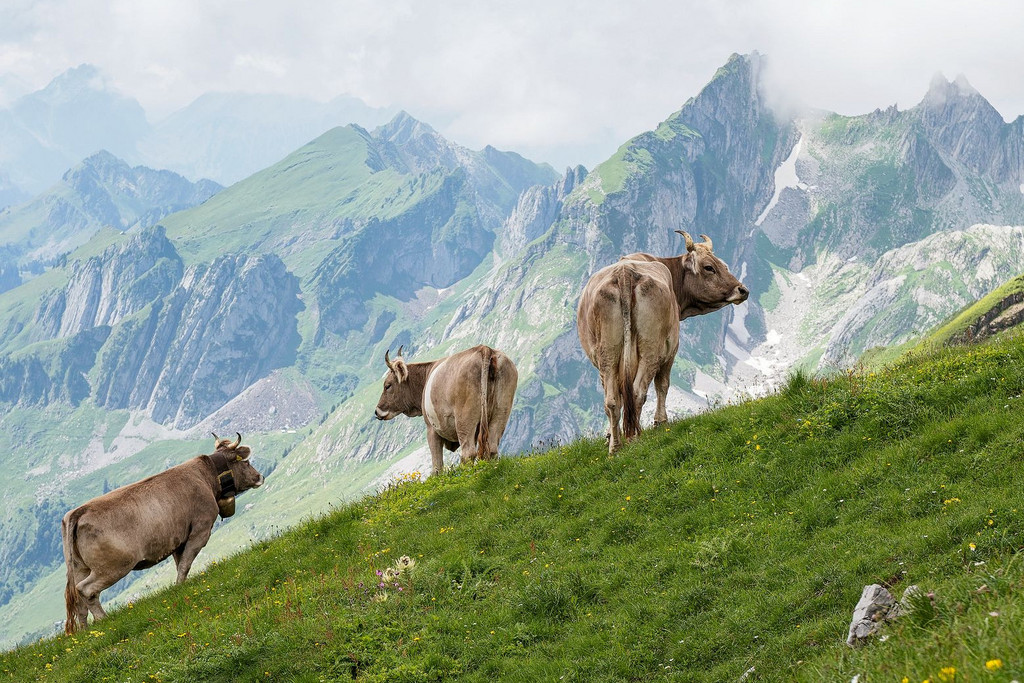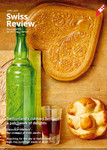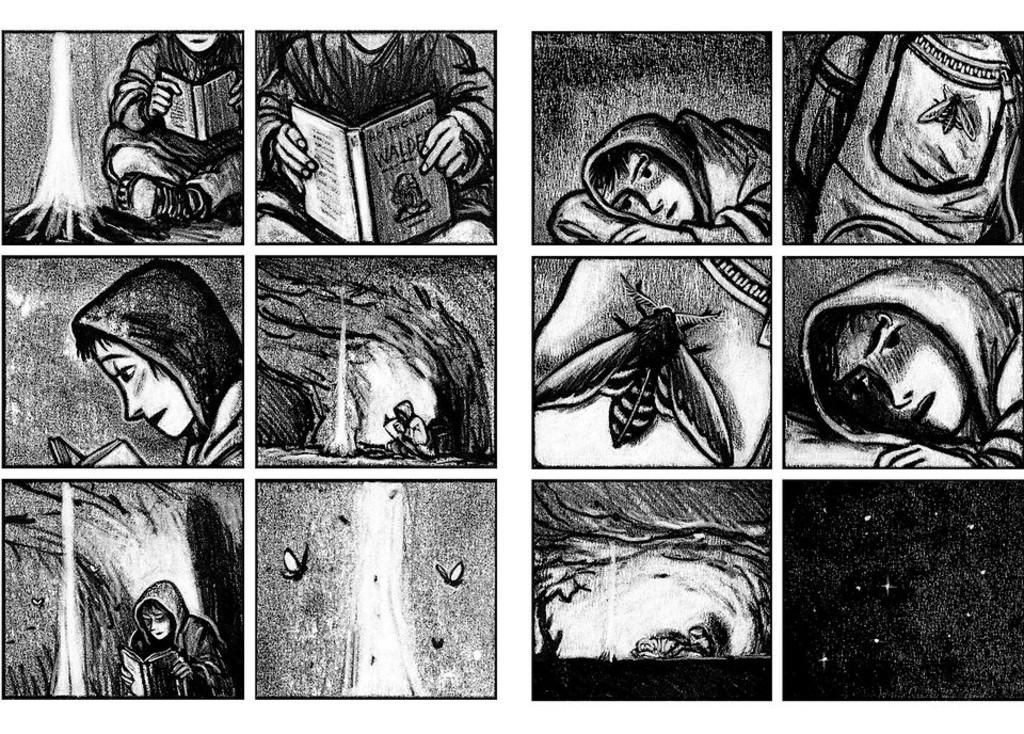In November 2018, a small group representing graphic novels in Switzerland met with the Director of the Federal Office of Culture (FOC). The aim of the visit was to convince the federal authorities to acknowledge comic art (or “the ninth art” as it is known in French) as a distinct discipline, with the creation of a Swiss prize for graphic novels and a national grant. It was hoped this development would feature in the 2019 Culture Dispatch published every four years by the FOC. Unfortunately, the team sent by Switzerland’s comic network came away empty handed: “The Culture Dispatch will mention graphic novels, but that’s all. We’re disappointed because we had hoped to see a real sign of recognition for this art form,” admits Jana Jakoubek, artistic director of the Fumetto festival in Lucerne. “I just hope that when graphic novels finally begin receiving funding like theatre productions, there will still be some left to see it,” quips Zep, ironically. The creator of “Titeuf” has sold almost 20 million albums around the world. He struggles to understand the Swiss authorities’ reticence, particularly given that “comic book museums from Korea to the USA name Rodolphe Töpffer from Geneva as the very creator of the genre”.
Switzerland opens first comic art school
Co-founder of the first Ecole supérieure de bandes dessinées (higher institute for graphic novels) in Switzerland, launched in Geneva in 2017, artist Tom Tirabosco is fighting for the creation of a Swiss centre for graphic novels. He defines the genre as “a major art form that has come of age”. “Comic artists now tackle all kinds of themes and are often far removed from the traditional French-Belgian publications, like Spirou or Lucky Luke,” he insists. “It is the only artistic medium ever to have been invented in Switzerland,” adds Dominique Radrizzani, director of the Lausanne festival, BDFIL. The discipline has been honoured in Geneva, where an Ibis Styles hotel is dedicated to Töpffer and his local successors (see box on next page).
Authors from the different parts of Switzerland now export their work internationally. Most come from French-speaking Switzerland, notably Derib, Cosey, Buche, Bertschy, Tirabosco, Peeters and Wazem. The German-speaking population also boasts its share of major authors, such as Thomas Ott and Anna Sommer, who follow in the footsteps of the German artist Wilhelm Busch, the man behind “Max and Moritz”. So, what then of the reticence mentioned by Zep? “Graphic novels are often considered as entertainment art, or an industry,” explains Philippe Duvanel, who runs the Delémont’BD festival. Duvanel participated in a previous visit to Bern four years ago, accompanied by colleagues from the Jura region, in support of a Swiss prize for graphic novels. According to Duvanel, Federal Councillor Alain Berset who oversees the FOC is in fact somewhat receptive to comic art. Nevertheless, “there is an undeniable problem regarding the legitimacy of attributing public funding to graphic novels. This is not the case for other art forms, like theatre, for example,” he laments.
Comic art requires few resources but considerable time
Although the materials needed for drawing might seem simple enough, “creating comic art is extremely time consuming”, explains Zep. In a world where a rising quantity of work is countered by increasingly limited printing opportunities, for this illustrator the profession of comic artist is becoming uncertain. He is in favour of a system that would provide support for comic creation, like that of the French National Book Center (CNL) in which grants are allocated by juries of experts. In Switzerland, the only such resources are a small number of cantonal grants; federal support for graphic novels is not bestowed by teams of experts, with comic art being classed simply as another form of design.
But in spite of everything, the Swiss comic scene may well be on its way to achieving recognition from the public authorities, particularly in French-speaking areas where cities like Lausanne and Geneva are working on plans for a centre of the “ninth art”. “Swiss comic art is earning Geneva a solid place amongst the genre’s major hubs, alongside Paris, Brussels and Angoulême,” insists Tom Tirabosco, who chairs the Swiss Comics Artists Association. Since 1997, Geneva has rewarded works of exceptional quality with the Rodolphe Töpffer awards. Switzerland also houses the Cartoonmuseum in Basel and hosts three major festivals: BDFIL, Fumetto and Delémont’BD. Additional events are celebrated in Aigle (VD), Belfaux (FR), Tramelan (BE) and Lugano (TI).
Publishers working with Europe
The Swiss publishing scene is active too, with publishing houses like Atrabile focusing on “underground” graphic novels and Paquet publishing work throughout Europe. RVB, a group led by Genevan artist Yannis La Macchia, also publishes work in digital format. In German-speaking Switzerland, Swiss comics are present in magazines such as “Ampel”, published by a collective in Lucerne, and “Strapazin” based in Zurich. “Moderne” also published the latest piece by Anna Sommer (see image opposite), whose work has been translated into French. When asked if there is a “Swiss” comic style, Zep replies: “Perhaps in the approach to the profession, which has developed in simultaneously multicultural and isolated surroundings.”
Comics emerged from the alternative scene
Born in 1799, Genevese satirist Rodolphe Töpffer is considered the founder of comic art, or “the ninth art” as it is known in French. “Töpffer wrote short stories in which he inserted drawings to support his text. He set out all of the elements of the contemporary comic,” explains Dominique Berlie, the councillor responsible for culture for the City of Geneva. Layout, panels, effects of repetition, arc of suspense: through these inventions, the self-taught creator of “graphic literature” met international success with his “Histoire de Monsieur Jabot” (see page 10), amongst other titles. “He also presented a theory to back up his art and received support from Goethe, who saw something important in it,” recalls Dominique Berlie. Jana Jakoubek continues: “After Töpffer, everything went quiet in Switzerland for a long time.”
“In the 1960s and 1970s came a comic that was to sell at an international level. It was an alternative piece linked to the world of squats, published in left-wing posters and newspapers,” says Dominique Berlie. In the 1970s, Genevan artists Ceppi and Poussin travelled to Paris where they worked with several large-scale publishing houses. Then, at the beginning of the 1990s, the Genevan magazine “Sauve qui peut” published the work of artists from the world of applied art, paving the way for voices of the new generation: Zep, Wazem, Baladi, Helge Reumann, Peeters and Tirabosco, amongst others.
In his youth, Zep offered his work to the local daily newspapers, but was unenthusiastically received. Yet the future creator of the “Guide du zizi sexuel” was soon relieved to see the work of his contemporaries emerging in the media. “The success of people like Derib, the author of Yakari, made me believe that I could break through in this profession,” he explains. Zep also talks of his meeting with Cosey, the creator of “In Search of Peter Pan”. “I love the mountains and I recognised a part of myself in the contemplative narratives set in the Pennine Alps. It showed we could tell our own Swiss stories at a time where Parisian comics were far removed from such themes.”
The next generation of Swiss comic artists is making itself heard, Dominique Berlie assures us, citing notably authors like Peggy Adam, Isabelle Pralong and Guillaume Long. In German-speaking Switzerland, Tom Tirabosco mentions the Schwyz-born painter Andreas Gefe, while Jana Jakoubek highlights work by the young Noemi Laake and Andreas Kiener from Lucerne, both active members of the “Ampel” group and magazine.
5 cult Swiss graphic novels
“Les pilules bleues”
Frederik Peeters
Atrabile
ISBN 978-2-9700165-6-4
31 CHF
“Damen Dramen”
Anna Sommer
Edition Moderne
ISBN 978-3-907010-91-4
26 CHF
“Le Guêpier” (volume 1)
Stéphane Ceppi
Casterman
ISBN 2203335157
out of stock
“The Number - 73304-23-4153-6-96-8”
Thomas Ott
Fantagraphics Books
ISBN 9781560978756
33 CHF
“Souviens-toi, Jonathan”
Cosey
Le Lombard
ISBN 2803613107
out of stock

















Comments